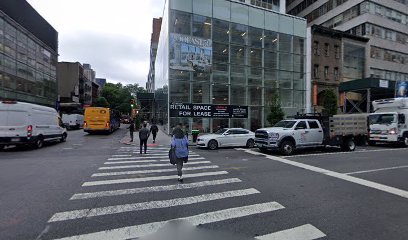It’s not every day that you find yourself piloting a scooter through the corals of the south western Indian Ocean. However, this is exactly how I made my first exploration of the azure blue waters of Mauritius — on what claims to be the world’s only underwater “sub-scooter” safari.
While scooter and rider are submerged three metres under the surface, a transparent dome over your head is pumped with air for so you can breathe normally and chat with your co-driver as you navigate through shoals of brightly-coloured fish. (www.blue-safari.com, based in the resort of Grand Baie, $183 per couple).
Of course, this is just one way of enjoying the bath water-warm ocean around this exquisite volcanic island. Mauritius is famous for long stretches of soft white sandy beaches, as well as the ring of coral reef around it that creates protected lagoons full of exotic fish.
Should you get bored of sunbathing, you can wade into the water with a snorkel. You can usually see plenty of underwater activity within a few metres of the shore, and most hotels offer snorkelling trips where they’ll take you to the most fish-crowded areas of the reef. If you’re keen to see more, diving is spectacular here
If you prefer to be on top of the water, there’s surfing, kayaking, pedalo, sailing and even kite surfing, popular with a hip crowd on the western coast.
Another must is deep-sea fishing. Mauritius is one of the best places in the world to fish for marlin, a large and imposing dark blue fish with a pointed nose. Take a trip with JP Henry Charters, a family-run operation based at the Le Morne Angler’s Club on the western coast, and they’ll send you out with local skippers who will take you to the best fishing spots, sailing past groups of curious dolphins. They’ll ensure that even amateurs hook a share of silver bonito and perhaps a bright yellow dorado, before you are strapped into the chair to put up a fight with a big one. Henry encourages a release policy. (www.blackriver-mauritius.com, from $565 for six people).
With most watersports available at your hotel, its no wonder many visitors to Mauritius never leave the grounds. In fact, with luxurious beachfront hotels, with gourmet restaurants, spas and limitless activities, along with fabulous weather and hospitality, it’s no wonder people come here for their honeymoons and never see the rest of the country.
However, that would be a shame, there is so much more to Mauritius than sea, beach and waving palm trees.
This tiny 2,040-square-kilometre country wasn’t ‘found’ until the 16th century, when it saw a succession of Dutch, then French and British colonisers, bringing with them first slaves from Africa, then Indian and Chinese labourers. The country became independent in 1968 and remains a stable, prosperous and highly literate nation, with a lively and harmonious mix of cultures and religions.
Away from the northern coast, where most of the hotels are based, there is plenty to discover. Take a day trip and you can fit in some of the major sites and get a flavour for Mauritius’ past and the present.
Head towards the capital of Port Louis, and you’ll find Pamplemousse — stop off and visit the botanical gardens here, with its collection of fabulous exotic plants including giant waterlilies given as a gift by Britain’s Queen Victoria.
Port Louis is a bustling harbour town, where you can visit the buzzing markets and browse for cheap clothing — until recently Mauritius was a major player in clothing manufacturing.
Heading south, you’ll come across Curepipe, the upmarket town where Mauritius’ high society resides. Here you’ll also find the Trou aux Cerfs, an extinct volcano, now lush with trees and birdlife, tucked away in the heart of a neighbourhood of 1960s and 1970s bungalows. Continue south and you’ll enter the backbone of verdant countryside, with its valleys, waterfalls including the Alexandra Falls and the Black River Gorge, and fields of sugar cane, Victoria pineapple and tea. Highlights here include the Hindu temple at Grand Bassin, with its sacred lake, and 33-metre high statue called the Mangal Mahadev guarded by families of monkeys (www.Gangatalao.org).
Further along your route you’ll drive through the Plaine Champagne, named after the tiny white flowers that pepper the route. Stop off to see the seven coloured earths of Chamarel, a landscape of blue, green, orange, purple and yellow.
The south is largely unspoiled by tourism, and well worth exploring. Start out at the dramatic Le Morne mountain in the southwest, which was used as a shelter by slaves in the 18th century and was recently named a UNESCO World Heritage site.
The most exclusive hotels might be on the eastern coast, but our favourite is Tamassa in the south. This spacious new four-star design hotel has an upbeat atmosphere and its bright, chic minimalist décor makes a refreshing change from the formal, colonial feel of many of the other hotels in Mauritius. With swimming pools, spa, kids club and watersports on tap it’s a popular choice with both honeymooners and families.
If you go …
Where to stay
• Tamassa, the four star hotel with friendly staff and uplifting, chic rooms, and all the facilities you might need — pretty beach, spa, watersports, swimming pools, several restaurants, nightclub, bar with live shows (www.naiade.com).
How to get there
• Air Mauritius planes with their uplifting orange and lime green colour scheme, fly from most destinations into Mauritius main airport at Plaisance (www.airmauritius.com).
Getting around
• hire a car or have a friendly experienced guide from Mauritours show you around (www.mauritours.net).
Curreny
• $1=26 Mauritius Rupees
Language
• English and French
On the web
www.mauritius.net
















